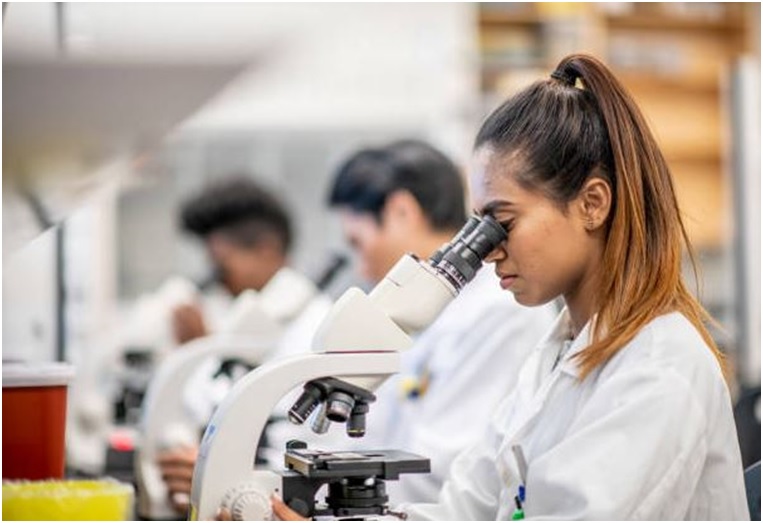Genetically Modifies Organisms and Human Health

GMOs — plants and animals whose genes have been modified genetically by scientists — are being waged over around the world. GMOs frequently receive press coverage about the environment, hunger, economics, politics, and, yes, even health. Read: difference between dominance and codominance.
Those opposed to GMOs believe that food created from genetically modified plants is unsafe for you. Those in favor of the creation of GMO foods usually have the positives of new innovations about the farm, shop, and table.
A research project by Pew Research Center revealed an astronomical statistical split: More than half of the adults taking part in that same survey believe eating genetically modified organisms (GMOs) is not safe, whereas just 9 out of 10 members of the American Association for the Advancement of Science do say that. If you’re like most Americans, you’re probably one of them.
Can you call something genetically modified when you personally see fit, or does someone have to tell you to call it that way? People have different theories of when to call something genetically modified. They vote on whether or not genetically modified items should be labeled. They also debate the economic and environmental impact that creating and eating them will have upon the planet and our bodies.
Natural Insights
The existing state of genes is not necessarily undesirable. It happens naturally regardless of the conditions. In fact, no matter how much you alter the menu, it is not exactly like the plant-eating creatures that existed billions of years ago.
In the natural world, how the genes that compose all living things function is the reason for all variations in height, gender, body functions, and more. Variants allow for living organisms to thrive better than those that don’t, so this type of information tends to spread.
The speed and technology of our ancestors allowed them enough foresight to save seeds of the best plants they grew to develop multiceeded seeds. Those tiny kernels of tall grass were then spread 10,000 years ago to be transformed into the large ears of juicy corn on the cob that we have today. With animals, plants and animals were loomed to develop “unparalleled” offspring along those lines.
Scientists create subsequent genetic modifications today by speeding up several, many generations and seasons. They modify the DNA of seeds by exposing them to radiation or chemicals, then decide which genetic changes the resulting plants propagate.
Importance of Genetic Modification
These are the methods that have led to the creation of viruses-free papayas, drought-resistant corn plants, plants resistant to weed killer, potatoes not prone to bruising, and plants with high degrees of yield for less money and generate more. As a result, this can provide us with healthy food and a great service.
Some GMOs are specifically engineered to contain vitamins, minerals, and other health advantages. For example, Swiss scientists developed a type of “golden” rice with beta-carotene, an antioxidant effective for your eyes and skin.
Soybeans whose fats are converted into like those of olive oil can be turned into a heart-healthy replacement for oils with trans fats that is more resilient to heat as well as to frying. Then, bruise-free potatoes are developed to diminish the produce of harmful chemicals when potatoes develop into French fries.
Some biotechnological companies are attempting to make meat healthier for us, such as raising the quantity of omega-3 fatty-acids it contains. These essential fatty acids can help reduce heart disease and stroke and protect against the development of cancer and other conditions. They may also help control fibromyalgia, eczema, and rheumatoid arthritis. But you must eat these from food, not from supplements or injections.
Certain regions will have to feed increasingly large populations. The Food and Agriculture Organization of the United Nations (FAO) anticipates that crop production will need to increase by approximately two billion metric tons worldwide by the year 2050. Genetically modified organisms can be used to increase feed production, as this approach takes a minimal amount of land, water, and other resources.
People worry about pollen and seeds coming from genetically engineered plants encroaching on the areas they were planted. Or what might happen if genetically engineered animals mate with non-modified or wild ones.
Safety Measures
We don’t know the biological factors that produce certain varieties of ruby red grapefruit, but we can be certain of their safety because natural mutations resulted in their creation.
A team of scientists assessed the potential risks connected to genetically modified organisms over the past 10 years. They identified no significant threats of toxicity.
The Medical Academy considers genetically modified foods to be safe. According to an official release from the organization, more than 20 years have elapsed since evidence of health effects of genetically modified foods has not been confirmed or found in professional scientific journals.
The World Health Organization, along with the FAO, adopts a set of scientific standards, guidelines, and practices dubbed the Codex Alimentarius as a resource used to formulate enforceable laws and regulations. It includes biotechnology and genetic engineering, too. Numerous countries reference the Codex when creating domestic laws and recommendations.
Conclusion
Genetically engineered crops have not been shown to be harmful to humans. Nevertheless, questions still remain concerning the changes that are attainable by GMOs, including the potential for genetic alteration and biological chain reactions.
Researchers working in unbiased academic settings, without the influence of politicians or interest groups, designs well-executed studies.